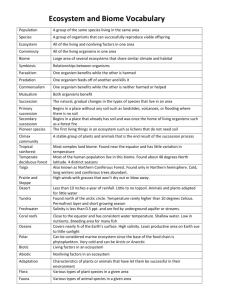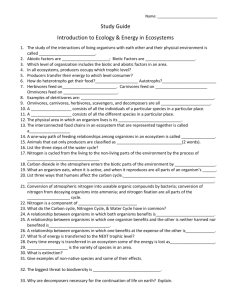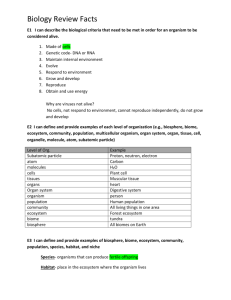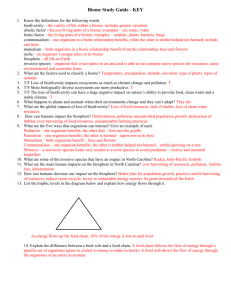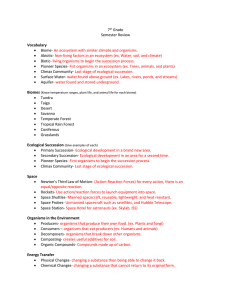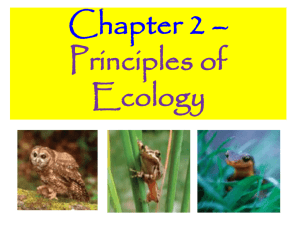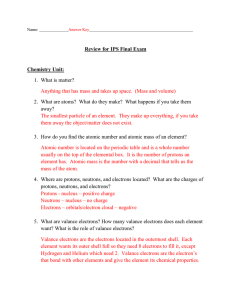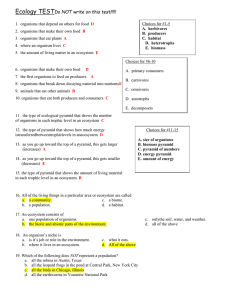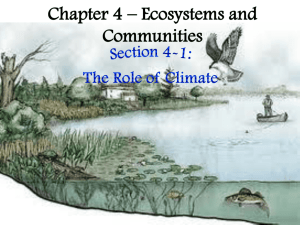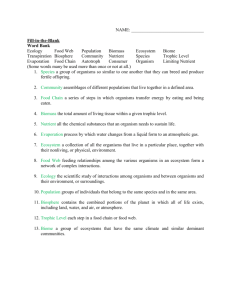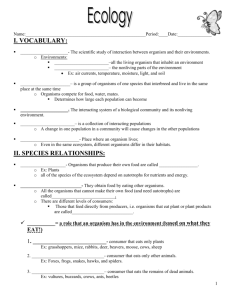CHAPTER 2 & 3 STUDY GUIDE Herd animals are usually
advertisement
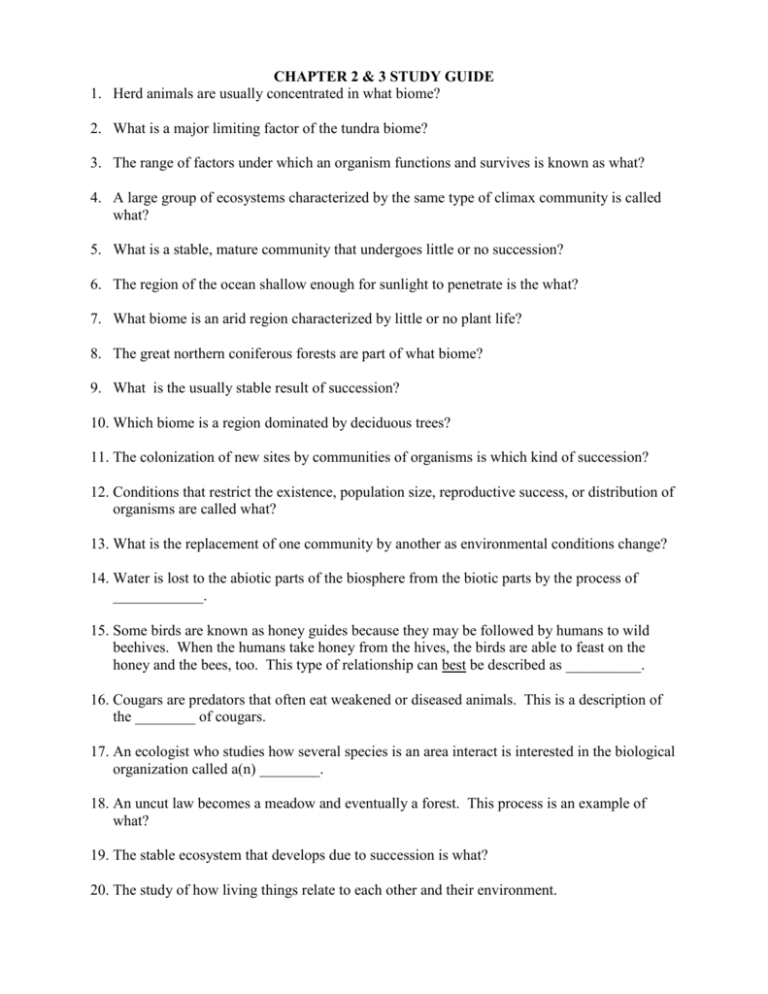
CHAPTER 2 & 3 STUDY GUIDE 1. Herd animals are usually concentrated in what biome? 2. What is a major limiting factor of the tundra biome? 3. The range of factors under which an organism functions and survives is known as what? 4. A large group of ecosystems characterized by the same type of climax community is called what? 5. What is a stable, mature community that undergoes little or no succession? 6. The region of the ocean shallow enough for sunlight to penetrate is the what? 7. What biome is an arid region characterized by little or no plant life? 8. The great northern coniferous forests are part of what biome? 9. What is the usually stable result of succession? 10. Which biome is a region dominated by deciduous trees? 11. The colonization of new sites by communities of organisms is which kind of succession? 12. Conditions that restrict the existence, population size, reproductive success, or distribution of organisms are called what? 13. What is the replacement of one community by another as environmental conditions change? 14. Water is lost to the abiotic parts of the biosphere from the biotic parts by the process of ____________. 15. Some birds are known as honey guides because they may be followed by humans to wild beehives. When the humans take honey from the hives, the birds are able to feast on the honey and the bees, too. This type of relationship can best be described as __________. 16. Cougars are predators that often eat weakened or diseased animals. This is a description of the ________ of cougars. 17. An ecologist who studies how several species is an area interact is interested in the biological organization called a(n) ________. 18. An uncut law becomes a meadow and eventually a forest. This process is an example of what? 19. The stable ecosystem that develops due to succession is what? 20. The study of how living things relate to each other and their environment. 21. Relationship between organisms in which both organisms benefit. 22. Network of interconnected food chains. 23. Relationship between organisms in which one organism benefits and the other is neither harmed nor benefited. 24. Layer of Earth that supports life. 25. Feeds on dead organisms. 26. Simple model for showing how matter and energy move through an ecosystem. 27. Group formed by several populations 28. Manufactures food using energy from the sun or from chemical compounds 29. Relationship between organisms in which one organism benefits at the expense of another. 30. Place where an organism spends its life 31. Step in the passage of energy and matter through an ecosystem 32. Obtains energy and nutrients from autotrophs. 33. Breaks down dead organisms 34. Carbon dioxide in the atmosphere enters the biotic parts of the biosphere through _____. 35. Sea stars live in saltwater ecosystems. Some species live in shallow tidal pools, while others live in the deepest parts of the oceans. This is a description of the _______ of sea stars. 36. Understand food chains and food webs. What’s the difference between the 2? 37. Understand ecological pyramids. (biomass, energy, numbers) 38. Recognize the water, carbon, nitrogen, and phosphorus cycles. 39. Understand range of tolerance curve.

